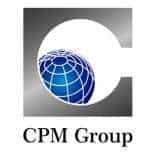Adding silver to the U.S. Department of the Interior's critical minerals list would likely have indirect impacts on its availability in investment markets (e.g., bullion, ETFs, futures, mining stocks), but these effects would primarily stem from enhanced supply chain focus, investment incentives, and market sentiment rather than direct restrictions or allocations that limit investor access. The designation itself does not impose export controls, mandatory stockpiling, or diversions of supply away from commercial markets; instead, it serves as a policy tool to prioritize domestic production and reduce vulnerabilities, which could ultimately increase overall availability. Below, I outline the likely ramifications based on the list's purpose, historical precedents for similar designations, and silver-specific market dynamics.
### Potential Positive Impacts on Availability
- **Increased Domestic Supply and Production:** The critical mineral status would encourage expanded U.S. silver mining through streamlined permitting, federal funding (e.g., grants or loans from the Department of Energy), and tax incentives like those under the Inflation Reduction Act for clean energy-related projects. This could boost overall global supply over time, as the U.S. aims to reduce reliance on imports (primarily from Mexico, which prompted silver's inclusion to hedge against disruptions). More supply entering the market would enhance availability for investors, potentially stabilizing or lowering long-term prices after initial volatility.
- **Attraction of Investment Capital:** Designation signals silver's strategic importance for technologies like solar panels, electric vehicles, and defense electronics, drawing private investment into exploration and production. This has historically led to growth in mining stocks and ETFs (e.g., those tracking silver miners), making silver more accessible via liquid financial products without reducing physical or derivative market availability. Silver's established, transparent markets (e.g., with benchmarks like LBMA prices) contrast with less liquid critical minerals, ensuring continued investor access.
### Potential Price and Market Dynamics Effects
- **Short-Term Price Volatility or Increases:** Heightened awareness of supply risks (e.g., deficits from declining mine production and rising industrial demand) could drive speculative buying, temporarily pushing prices higher. For instance, if policies like tariffs on imports are implemented to support domestic producers (as seen in investigations for other minerals), this could raise costs but also incentivize more supply. However, this wouldn't restrict availability; it might even benefit investors by amplifying returns on silver holdings during surges.
- **No Direct Reductions in Market Access:** Unlike some strategic materials with government-mandated reserves, critical mineral status focuses on onshoring and friendshoring to secure chains, not withholding supply from investors. Silver remains a globally traded commodity, with 80% of supply as a byproduct of other metals, and markets staying open to all buyers.
### Historical Context and Risks
Precedents from other minerals (e.g., lithium or rare earths added in prior lists) show designations leading to increased production investments without curtailing investor availability; instead, they've created opportunities amid supply-demand imbalances. For silver, ongoing deficits (e.g., 237.7 million ounces in 2022) and growing demand (e.g., 14% of global use in photovoltaics) already tighten markets, but the list addition would likely amplify efforts to address this through supply growth rather than restrictions. Potential downsides include regulatory hurdles or environmental opposition delaying new projects, which could temporarily constrain supply and affect prices, but not specifically target investment markets.
In summary, the impact would generally be positive or neutral for availability, fostering more supply and investment options while potentially introducing short-term price effects driven by market perceptions of silver's critical role.











